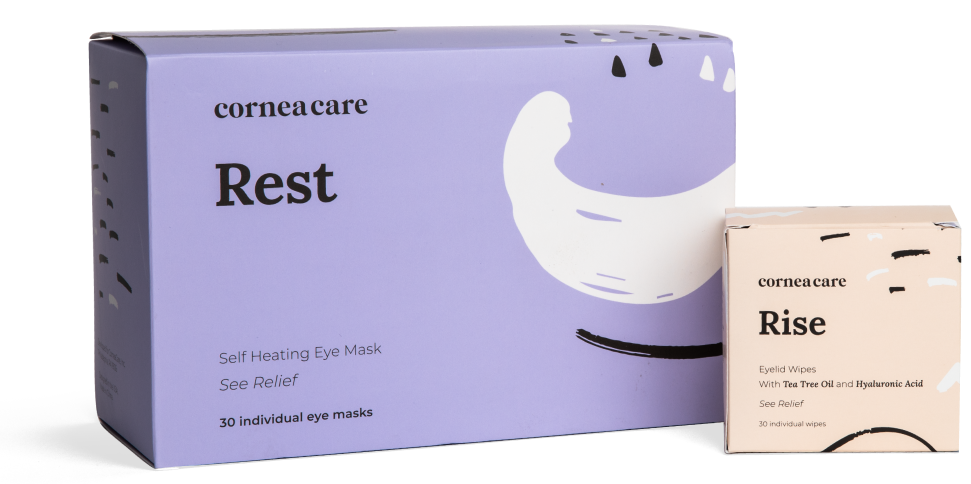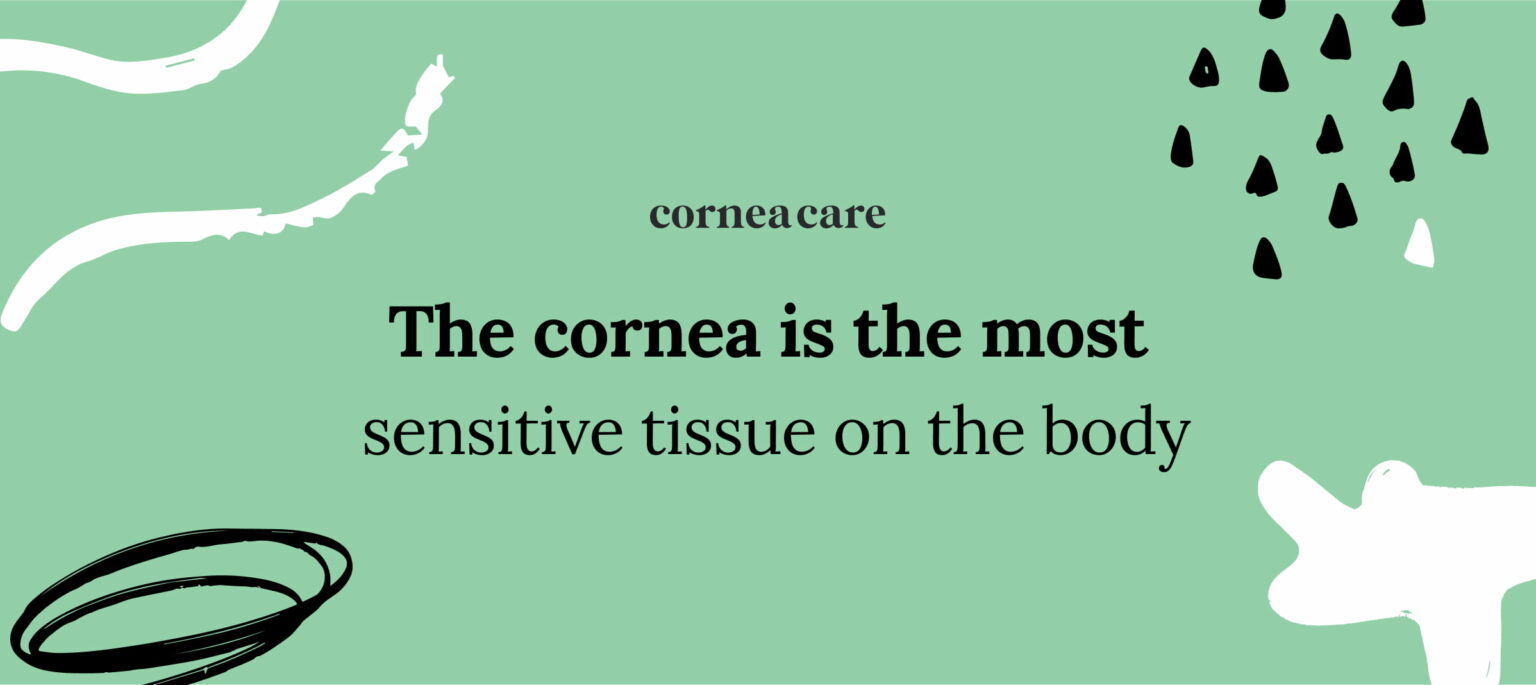The eye is one of the toughest yet most sensitive organs of the body. Even small foreign bodies like an eyelash or speck of dirt can be very irritating, painful, and cause the eye to hurt when you blink. Contact lens wearers, those with autoimmune conditions, and individuals who take medications that result in dry eye disease are particularly at risk for ocular conditions and eye injuries.
Not only does the cornea have many nerves, it is also responsible for two-thirds of the eye’s total optical power. Any condition that affects the cornea may cause a significant loss in visual acuity and should be examined by a doctor immediately.
We will discuss the most common ocular conditions and injuries which may cause eye pain when blinking.
Key Points
- Many eye conditions or eye injuries may cause your eye to hurt when you blink.
- The cornea is the most sensitive part of the eye and is innervated by many large nerves and branches of both the long and short ciliary nerves.
- Eye pain can indicate a serious condition and an individual with new ocular pain should be examined ASAP by an eye doctor.
Why Does my Eye Hurt When I Blink?
Your eye may hurt when blinking for a number of different reasons. Eye conditions or eye injuries that affect the cornea can result in significant discomfort. The cornea is a sensitive part of the eye because it is densely innervated with sensory fibers. As many as seventy to eighty large nerves and branches of the long and short ciliary nerves enter into the peripheral stroma. The stroma is one of the five layers of the cornea.1
Furthermore, when compared with the epidermis of the skin, the density of sensory nerve endings in the cornea epithelium is approximately 400 times greater with approximately 7000 nociceptors per square millimeter. Corneal nerves are responsible for the sensations of touch, pain, and temperature and play a role in blinking, wound healing, and tear production and secretion.2
Common Causes of Eye Pain When Blinking
Many eye conditions or eye injuries can cause eye pain. An eye exam is indicated for the correct diagnosis to be made.
Eye Conditions that Cause the Eye to Hurt
Keratitis, dry eye disease, and styes are common conditions that may cause the eye to hurt when blinking.
Exclusive offers
Receive exclusive offers about dry eye health and wellness, courses, and more!

Dry Eye Disease
Dry eye disease is caused by decreased tear production or excessive tear evaporation. Excessive screen time, gender, age, and certain systemic medications are risk factors for dry eye. Common symptoms of dry eye are watery eyes, red eyes, dryness, burning and ocular discomfort. It may also be the cause of vision problems.
Your eye care provider may begin treatment with over-the-counter artificial tears. Additional treatment options are dependent on the type of dry eye, but may include warm compresses, lid hygiene, and/or steroid eye drops.
Check out CorneaCare’s eyelid hygiene products built specifically to relieve dry eye symptoms.

All Rounder
Eyelid Hygiene Plan 3
Perfect for eye dryness, burning, itching, grittiness, crusting/flaking of eyelashes and inflamed/swollen eyelids. Free shipping 📦.
Try today - $60
Optic Neuritis
Loss of vision and severe pain with eyeball movement are symptoms of optic neuritis. Patients with optic neuritis have an increased risk of developing multiple sclerosis. Optic neuritis is considered a medical emergency and an eye doctor will send the patient to the emergency room.3
Uveitis
Uveitis is inflammation in the front part of the eyeball and affects the iris, ciliary body, and choroid. The eye condition may occur due to an unknown reason (idiopathic) or it may be the result of inflammation in the body. Most commonly, autoimmune diseases such as lupus, multiple sclerosis, rheumatoid arthritis, and sarcoidosis often cause uveitis. The symptoms of uveitis include blurry vision, floaters, red eyes, light sensitivity and eye pain.4
Stye
A stye occurs at the site of a blocked or clogged oil gland. The oil glands, called meibomian glands, are located at the base of the eyelash. The oil from these glands balances the tear film of the eye. If the gland becomes clogged and infected, a stye develops. An eye doctor calls a stye a chalazion or hordeolum. Patients with blepharitis are more likely to have a stye.
Treatment for styes may include eyelid scrubs, warm compress, and sometimes oral antibiotics. CorneaCare’s Rest self-heating warm compresses and eyelid wipes are perfect for combating styes!

Foundation
Eyelid Hygiene Plan 2
Perfect for eye dryness, burning, itching, crusting/flaking of eyelashes and inflamed eyelids. Free shipping 📦.
Try today - $45
Corneal Ulcer
A corneal ulcer is an open sore on the cornea and is most likely to occur after sleeping in contact lenses. An ulcer is caused by bacteria, a virus, fungi or a parasite called Acanthamoeba found in water or soil. A corneal ulcer is very painful and the eye may be red, light sensitive (photophobia) and tear. A white spot may be visible on the cornea. Corneal ulcers can be serious if they are located in your line of sight.
Treatment for a corneal ulcer depends on the cause, but often includes antibiotic drops initially and a steroid after the condition begins to improve.5 In addition, doctors recommend never sleeping in your contacts because ulcers may cause scarring and permanent vision loss.
Sinuses
Even though the sinuses are not a part of the eye, they are located around and behind your eye socket and may cause eye pain. Two large frontal sinuses are located above your eyes, two sphenoid and two ethmoid sinuses are set between your eyes, and the largest two sinuses, the maxillary sinuses, are located under your eyes and behind your cheeks. Sinusitis is one of the most common health complaints in the U.S.6 Facial pain, eyeball pain and pressure around and behind the eyes are symptoms of sinusitis.7
Keratitis
Keratitis is inflammation of the cornea, the clear tissue on the front of the eye and can be both infectious or non-infectious. Non-infectious keratitis can be caused by wearing your contact lenses too long. Infectious keratitis can be caused by bacteria, viruses, fungi and parasites. Common symptoms of keratitis include redness, blurry vision, burning, foreign body sensation, and light sensitivity. The treatment depends upon the cause of the keratitis but in most cases anti-inflammatory drops (steroids) are used with artificial tears. Fungal infections can be difficult to diagnose and to treat.8
Conjunctivitis
Pink eye, also called conjunctivitis, rarely results in eye pain but may cause slight discomfort. Conjunctivitis is inflammation of the conjunctiva, the outer membrane of the eyeball and inner eyelid. An eye infection like conjunctivitis can be caused by a virus, bacteria, or exposure to an allergen, resulting in allergic conjunctivitis.
Eye Injuries
Eye injuries such as a corneal abrasion, foreign object in the eye or a chemical burn may also cause eye pain with blinking.
Corneal Abrasion
An abrasion can be a very painful scrape to the cornea. It can be caused by a foreign object in the eye or is often caused by a fingernail or tree branch. An eye doctor will treat a corneal abrasion with an antibiotic eye drop to prevent infection. In addition, some doctors may use a contact lens as a bandaid on the eye to improve eye comfort with blinking.
Chemical Burns
Ocular chemical burns occur when chemicals splash into the eye and are responsible for 11.5%-22.1% of all ocular injuries.9 Copious irrigation with a saline solution is recommended to remove the chemical agent and minimize the damage to the eye. Most importantly, any chemical burn requires immediate medical attention by an ophthalmologist or optometrist.
When to See a Doctor for Eye Pain
Finally, contact your eye doctor immediately if you experience any new eye pain with or without vision changes.
Putting It All Together
Any injury or ocular condition that affects the anterior aspect of the eye, particularly the cornea, may cause the eye to hurt when blinking. The cornea is one of the most sensitive organs of the body due to the innervation of many nerves. The nerves are responsible for the sensations of touch, pain, and temperature. If your eye hurts when blinking, you should see an eye doctor immediately.
What’s Next
Learn to love your eyes! Read more eye health and wellness tips on our blog.



